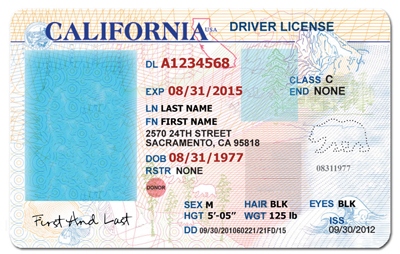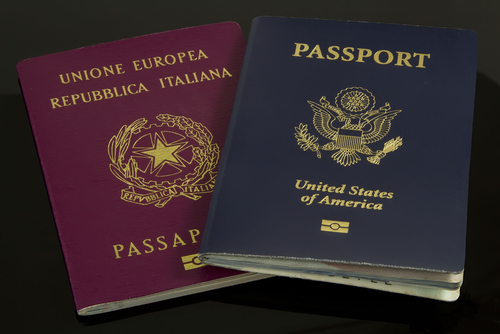Interpreting and Translation Services
Quick links
Interpreting and Translation Services
Choosing the right service can be confusing.
What is the difference between simultaneous and consecutive interpreting?
Why do interpreters sit in a booth? Is it absolutely necessary?
This page will guide you through the characteristics of interpreting and translation services.
If you are still unsure about what service to request, use the Services Configurator.
Simultaneous Interpreting

Well, the name says it all. The speaker and the interpreter speak at the same time, the latter from a sound-proof booth. The audience listens to the interpreter via headphones.
Since interpreting is usually a fast-paced, stressful, and physically and emotionally demanding activity, two interpreters are needed per language, who take 20-30 minutes shifts.
Number of required interpreters: up to 30 minutes: 1 | over 30 minutes and up to 8 hours (including 1 hour break): at least 2.
Audience: medium to large.
Suggested for: conferences with a large audience and any time the invisibility of interpreters is a plus.
What equipment do interpreters need: a simultanous interpreting booth, consoles with microphones, signal transmitters, headphones.
What else do interpreters need: direct line of sight on the speaker(s) (or remote view via monitor installed in the booth) and hearing the speaker. As strange as it may seem, when speakers or audience do not use a microphone (e.g. during Q&A sessions) interpreters cannot hear and therefore cannot translate what is being said.
Consecutive Interpreting

Consecutive interpreting is widely used in conferences, training courses, and presentations.
The speaker talks for a few minutes or sentences and the interpreter takes notes.
Then the former stops and the latter translates, and the loop repeats.
Number of interpreters: up to 2 hours: 1 | more than 2 hours and up to 8 (with 1 hour break): at least 2.
Audience: medium to large.
Suggested for: conferences with a large audience, or for speeches that last 30-45 minutes or so.
What equipment do interpreters need: a microphone with a support, preferably a stick if the interpreter is standing. Interpreters use both hands during consecutive, so they cannot hold a microphone in their hands.
What else do interpreters need: be as close as possible to the speaker.
Do not underestimate: TIME. The speech time will be two thirds longer when consecutive is used. As a rule of thumb, if the speaker is allotted 30 minutes in total, the interpreter will require 20 for translation, so the speech will last 50 minutes and not 30. Check your planning…
Liaison Interpreting

Liaison Interpreting is often used in official meetings or business meetings, and every time when there is a 1 to 1 relationship. Think of two Ministers, or businessmen: that’s the perfect setting.
Number of Interpreters: up to two hours (with a 30′ break): 1 | more than 2 hours and up to 8 (with 1 hour break): at least 2.
Audience: 1 or 2 per side.
Suggested for: bilateral meetings, business-to-business and business-to-consumer meetings, one-to-one training.
How it happens: interpreters translate what one speaker says to the other and viceversa.
What do interpreters need: be as close as possible to the speakers.
Whispered Translation or Chuchotage

Whispered interpreting, sometimes called Chuchotage after the French for ‘whispering’, is normally used for one or two listeners.
The interpreter translates what is being said simultaneously in a whisper, so as not to hinder the conference or meeting.
Number of interpreters: up to 30 minutes: 1 | over 30 minutes and up to 8 hours (with 1 hour break): at least 2.
Audience: 1 or 2.
Suggested for: bilateral meetings, talk shows, press conferences (together with consecutive) and in all cases when the interpreter’s presence is not a problem.
What happens: interpreters whisper translations directly to the client’s ears.
What do interpreters need: be as close as possible to listeners and speakers.
Court Interpreting

Court interpreters can have several roles in court proceedings. They can be appointed by the court to translate what judges, lawyers, witnesses and the accused say to each other, or they can be hired by one of the parties to check on what and how the court-appointed interpreter translates.
Court interpreters can also translate trial documents or other documents for “official translations”.
The issue of official translation is quite controversial. In Italy, for example, the translation is not official per se just because a court interpreter or another translator did the job. The translation must be validated by a court clerk to acquire legal value.
Mandatory Requirements/Skills
- Advanced knowledge of the foreign Language, culture, and legal system
- Perfect knowledge of mother tongue
- Knowledge of the two legal systems, including international law, criminal law, criminal procedure, immigration laws, civil law, etc.
- Knowledge of procedure and interactions among stakeholders during legal proceedings and trials.
Translations

What’s the average price of a translation? That’s just THE no-straight-answer questions. Prices of translation vary accordig to length, difficulty, availability of source texts, and many other parameters.
Generally speaking, the price of translations is based on the number of words in the source text, including spaces. On the Italian market, people tend to stick to the 1500-chars unit (Italian: cartella) or to the Italian editorial unit (1375 chars, including spaces). Some others say 1800 characters. These are just old habits, and we know they die hard… For the sake of clarity, just beware! Forewaned is forearmed.
How are translation made? Well, that’s pretty easy. You send the translation over, agree on a deadline and a price, and the translator will deliver the translation to you and will be paid.
What does the translator need? It would be nice if the translator could receive some background documents, or previous minutes of meetings, or any file or document you can send to make him/her more familiar with the documents to be translated.
How long does it take? Well, that depends on the translation itself, on its length, on whether the delivery is urgent or not, etc. Consider this: no serious translator would sit, take a quick look at the text and start translating. If you know your translator did this, he has either perfect knowledge of the contents, or you are wasting your money.
A good translator would first read the entire text (required phase), then conduct a search about everything (s)he thinks is needed to fully understand every part or passage (key phase), and eventually translate (longest phase).
In real terms, translators have an output of about 1300 to 1500 words / day of text. That would be a final, usable text that has gone through reading, research, translation, and review (sometimes double review) phases. This is indeed a rough estimate, as short texts can be tricky sometimes, while longer texts much easier than mid-sized ones.
If you want to know more…
[caldera_form id=”CF5862f7283a52d”]
Official Translations / Sworn Translations
LEGAL BACKGROUND
From a legal stand point, the concepts of “Official Translation” and “Official Translator” are mentioned and yet not defined in the Italian legal system. The only way a translator has to deliver an “official” translation is through a sworn translation. (S)he would therefore go to a Court Clerk, fill a form, say under oath that (s)he has truthfully and faithfully executed its duties as translator and let the Clerk sign it.
USE THE PROPER TERMS
Sometimes public offices are not clear about what people are expected to submit, and therefore clients’ requests to the translator are confused. Let’s shed some light on the correct terms.
A Sworn Translation (Italian: Traduzione asseverata) is a translation of foreign documents that must be legally valid In Italy or abroad. Driving licenses, car plate replacements, study credentials are just some examples.
Legalization: You can get certain official documents ‘legalised’ by asking the Legalisation Office to confirm that the signature, stamp or seal is from a public official. You might need to do this if an official in another country has asked you to provide a document and they’ve said it must be legalised. The Legalisation Office will check the document, including whether the signature, stamp or seal is genuine. They’ll legalise the document by attaching a stamped official certificate (an ‘apostille’) to it.
URGENT TRANSLATIONS
The best way to obtain your translation in the shortest time possible is to help the translator beforehand.
Procedures vary from country to country, and different authorities may require documents, including translations, are submitted in different forms. Here’s a summary of what translators need to know:
- What is the document for? Are you giving the document to a notary public, or a public office? Is this a foreign document they have to use in an administrative process? Do you have to send the document(s) abroad? Where?
- Who is the end user? Municipality, Province, State, Federal?
This is what you can ask to the authorities requesting yout traslated document(s):
- Do you need a sworn translation? As your end user.
- Should the document be legalized?
- Should the translator be listed as a court interpreter, or an official translator the Embassy/Consulate Trust?
DRIVING LICENSE TRANSLATION
In order to drive in Italy, you need a translation of your driving license. Please read this post to know how to obtain it.
If you want to know more…
[caldera_form id=”CF5862f7283a52d”]
Do you want to know more?
Paolo CAPPELLI @interpreterpaul
Interpreter | Translator
Italian - English - Spanish
US +1 (202) 697-9777
Italy +39 (339) 331-5178
Please, do not send CVs.
WeTranslate.xyz, LLC is a company registered in the State of Delaware, US
712 H Street NE, Suite 1441
Washington, DC 20002



